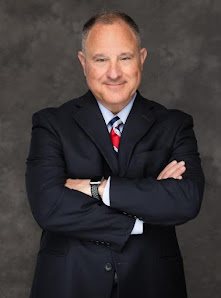The Ohio Supreme Court recently that the state's product liability law prohibits counties from bringing public nuisance claims against national pharmaceutical chains as they did as part of national opioid litigation, a decision that could overturn a $650 million judgment against the pharmacies, reported The Associated Press and WOSU in Columbus.
An attorney for the counties called the decision
“devastating.”
Justices were largely unanimous in their interpretation of
an arcane disagreement over the state law, which had emerged in a lawsuit
brought by Lake and Trumbull counties outside Cleveland against CVS, Walgreens
and Walmart.
The counties won their initial lawsuit — and were awarded
$650 million in damages by a federal judge in 2022 — but the pharmacies had
disputed the court's reading of the Ohio Product Liability Act, which they said
protected them from such sanctions.
In an opinion written by Justice Joseph Deters, the court
found that Ohio state lawmakers intended the law to prevent “all common law
product liability causes of action" — even if they don't seek compensatory
damages but merely “equitable relief” for the communities.
“The plain language of the OPLA abrogates product-liability
claims, including product-related public-nuisance claims seeking equitable
relief,” he wrote. “We are constrained to interpret the statute as written, not
according to our own personal policy preferences.”
Two of the Republican-dominated court's Democratic justices
disagreed on that one point, while concurring on the rest of the judgment.
“Any award to abate a public nuisance like the opioid
epidemic would certainly be substantial in size and scope, given that the
claimed nuisance is both long-lasting and widespread,” Justice Melody Stewart
wrote in an opinion joined by Justice Michael Donnelly. “But just because an
abatement award is of substantial size and scope does not mean it transforms it
into a compensatory-damages award.”
In a statement, the plaintiffs' co-liaison counsel in the
national opioid litigation, Peter Weinberger, of the Cleveland-based law firm
Spangenberg Shibley & Liber, lamented the decision.
“This ruling will have a devastating impact on communities and their ability to police corporate misconduct," he said. “We have used public nuisance claims across the country to obtain nearly $60 billion in opioid settlements, including nearly $1 billion in Ohio alone, and the Ohio Supreme Court’s ruling undermines the very legal basis that drove this result.”
But Weinberger said Tuesday's ruling would not be the end,
and that communities would continue to fight “through other legal avenues.”
"We remain steadfast in our commitment to holding all
responsible parties to account as this litigation continues nationwide,” he
said.
In his 2022 ruling, U.S. District Judge Dan Polster said
that the money awarded to Lake and Trump counties would be used to the fight
the opioid crisis. Attorneys at the time put the total price tag at $3.3
billion for the damage done.
Lake County was to receive $306 million over 15 years.
Trumbull County was to receive $344 million over the same period. Nearly $87
million was to be paid immediately to cover the first two years of payments.
A jury returned a verdict in favor of the counties in
November 2021, after a six-week trial. It was then left to the judge to decide
how much the counties should receive. He heard testimony the next May to
determine damages.
The counties convinced the jury that the pharmacies played
an outsized role in creating a public nuisance in the way they dispensed pain
medication. It was the first time pharmacy companies completed a trial to
defend themselves in a drug crisis that has killed a half-million Americans
since 1999.
To read more CLICK HERE








No comments:
Post a Comment